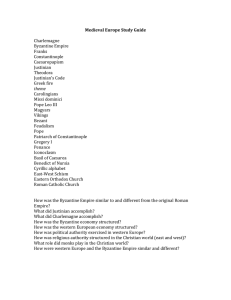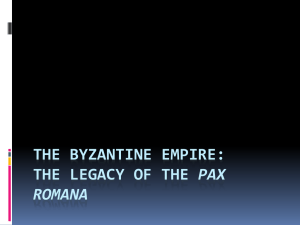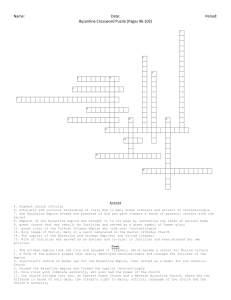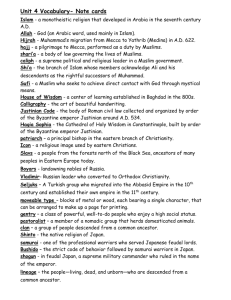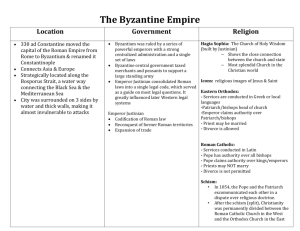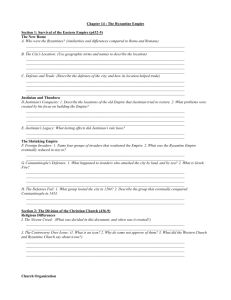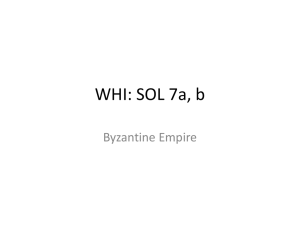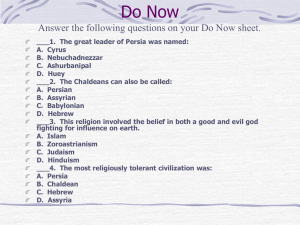Byzantine Empire: History, Key Figures, and Legacy
advertisement
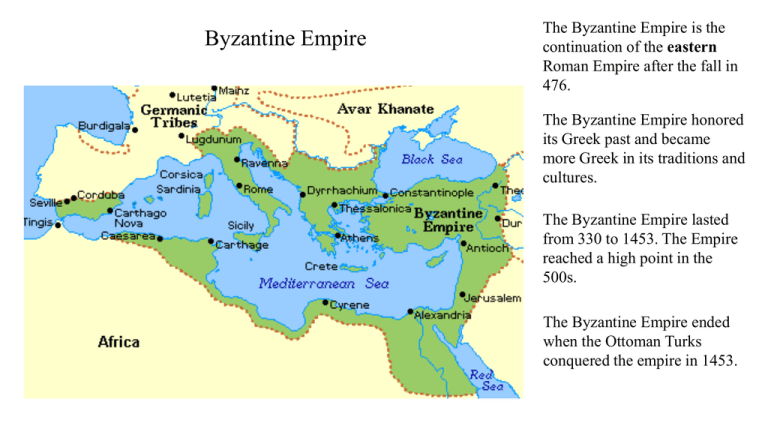
Byzantine Empire The Byzantine Empire is the continuation of the eastern Roman Empire after the fall in 476. The Byzantine Empire honored its Greek past and became more Greek in its traditions and cultures. The Byzantine Empire lasted from 330 to 1453. The Empire reached a high point in the 500s. The Byzantine Empire ended when the Ottoman Turks conquered the empire in 1453. The capitol of the Byzantine Empire was Constantinople. Constantinople was named after the Roman emperor Constantine. Constantinople was a very wealthy trading center due to its location at the crossroads of trade routes between Europe and Asia. Constantinople’s location on the waterways between the Black Sea and Aegean Sea also contributed to its success as a trading center. Constantinople Emperor Justinian’s Legacy Under Justinian’s rule, much of the western Roman territory was regained. However, it was lost again over time after Justinian died. Justinian’s wife, Empress Theodora, did much for women’s rights – for the first time a Byantine wife could own land. Justinian’s legacy includes the construction of the Hagia Sophia, a church that was an engineering marvel of the time. Justinian also simplified Roman laws into an organized system known as the Justinian Code. Many countries use this code as a base for their modern legal systems. The Great Church Schism (Split) Roman Catholic Church - Did not believe in use of icons - Believed the pope was the head of ALL Christian churches - Believed pope could pick an emperor 1054 – excommunicated each other; church split into two separate churches: Roman Catholic & Eastern Orthodox Eastern Orthodox Church - Believed icons helped explain Christianity - Believed that Byzantine bishops and other church leaders were equal to the pope - Believed the leader of the Byzantines was the only true emperor
